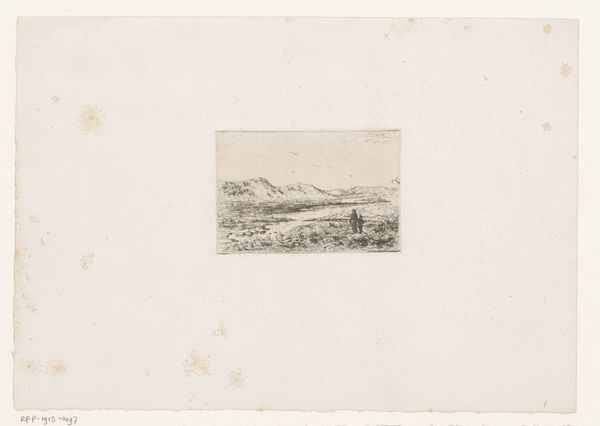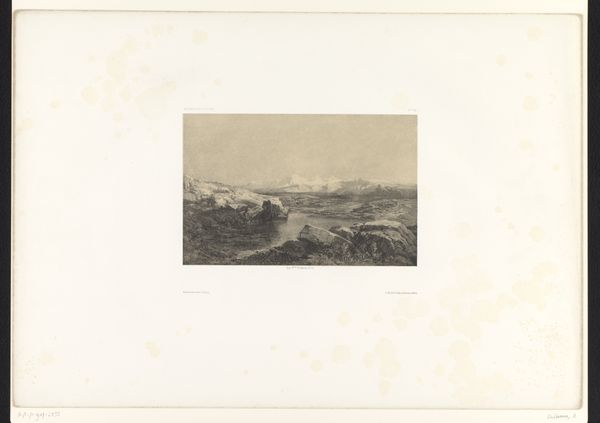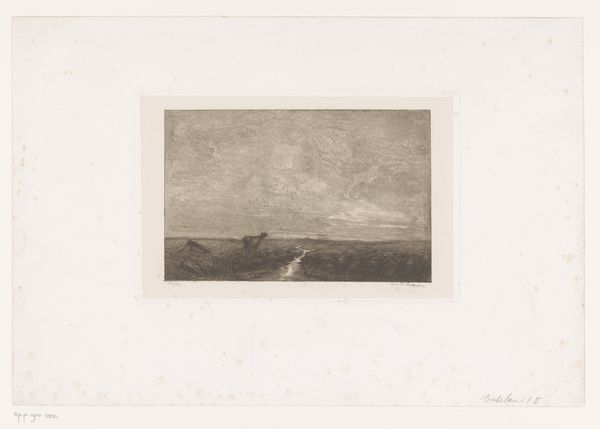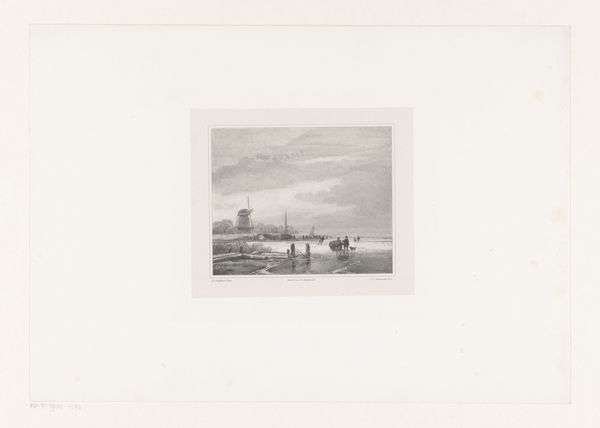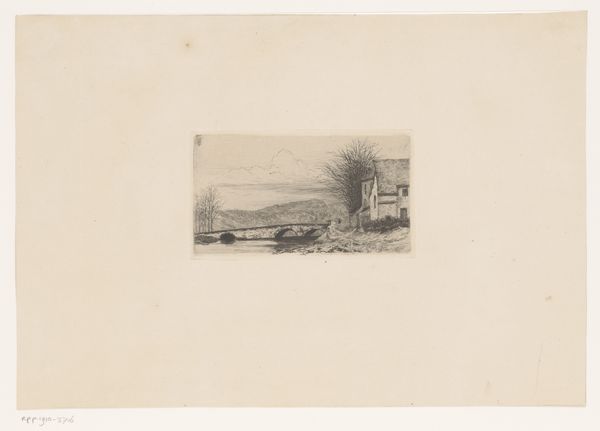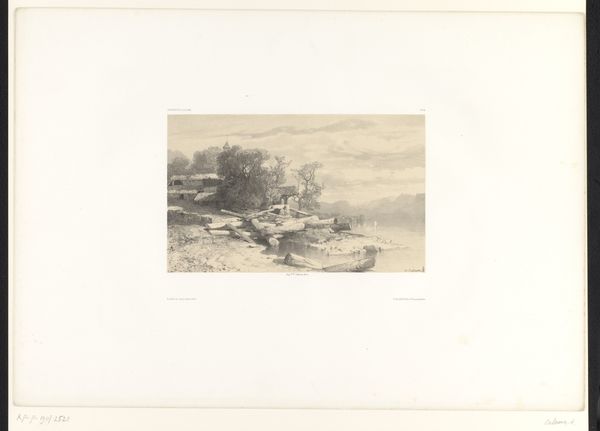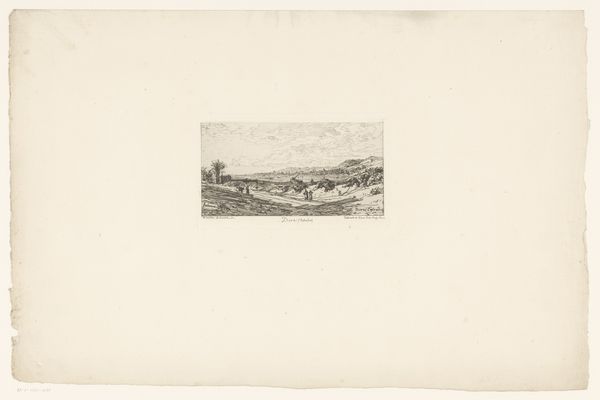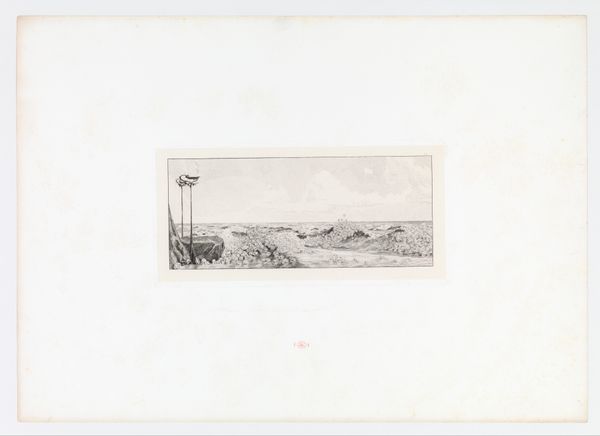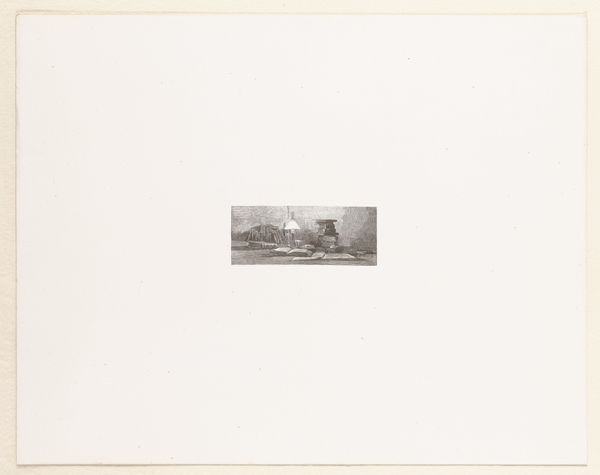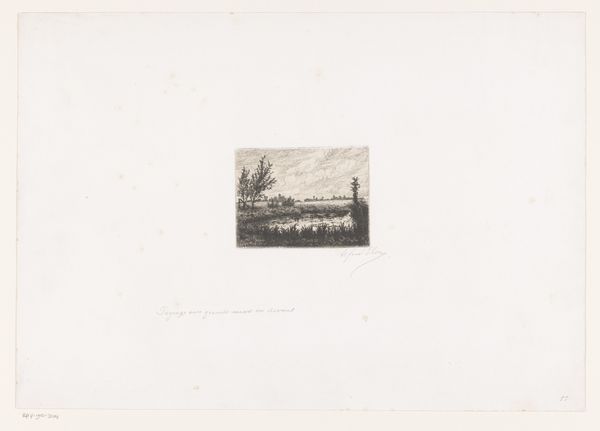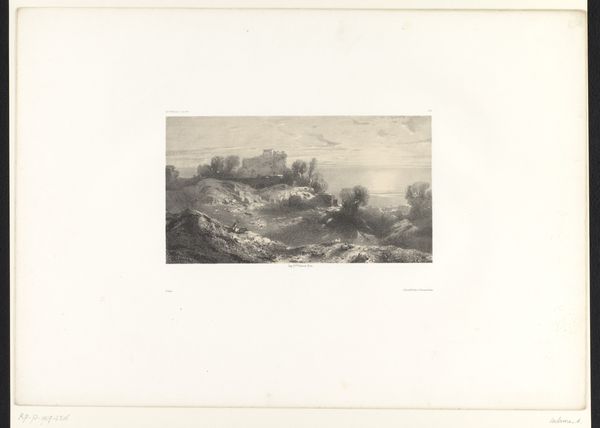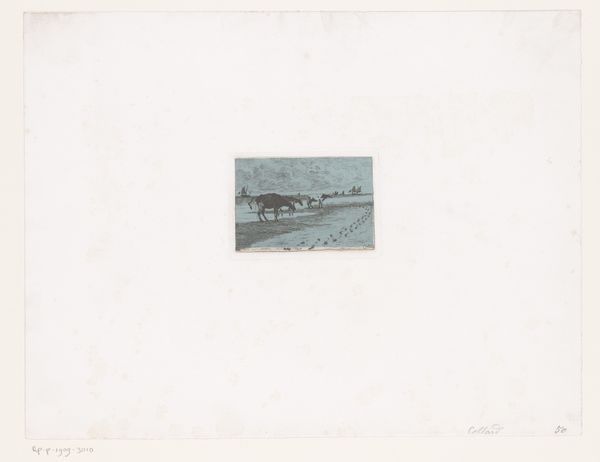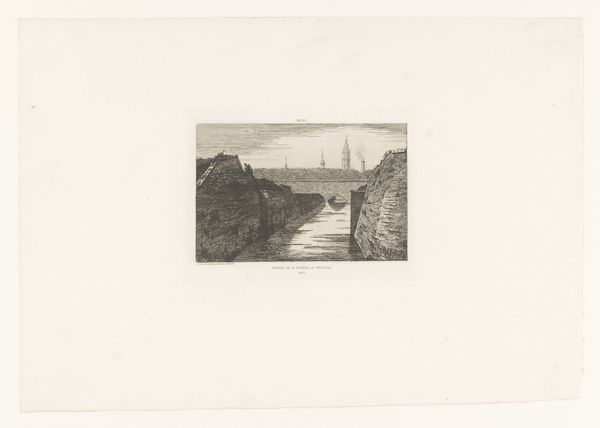
print, etching, paper, engraving
# print
#
etching
#
landscape
#
paper
#
united-states
#
engraving
#
realism
Dimensions: 2 1/8 x 5 1/16 in. (5.4 x 12.86 cm) (image)9 1/2 x 12 in. (24.13 x 30.48 cm) (sheet)
Copyright: Public Domain
Curator: Before us we have an intriguing work, simply titled "Untitled (landscape with monument)," likely created sometime in the 19th century by William B. Closson. The piece, residing here at the Minneapolis Institute of Art, utilizes etching and engraving techniques on paper to depict a somber landscape. What are your immediate thoughts? Editor: Stark. Melancholic, even. The limited tonal range coupled with the sparseness of the landscape creates a sense of isolation. And is that a figure standing atop the monument? There is a lot of emptiness surrounding this piece. Curator: Yes, and I believe that’s crucial. Considering the sociopolitical history of monument-building in the 19th century, particularly in relation to power and often, subjugation, that isolated figure takes on significant weight. The deliberate positioning of the monument against a desolate backdrop begs the question: what narratives are being monumentalized and whose stories are silenced? Editor: Interesting. I hadn't considered the active erasure implied by the wide-open space. I was focused more on what felt like a Romanticist sensibility. We’ve got this lone tree on the right that echos that feeling too. But to connect the monument, that symbol of cultural dominance and assertion of legacy, to that emptiness… it almost renders it futile, doesn't it? Like a desperate claim against the inevitable. Curator: Precisely. And we also have to ask how Closson, as the artist, is implicated. The print is small and contained, removed somehow, a representation of the monument not the real thing. What’s the statement on U.S. cultural expansion, on its attempts to write history onto a landscape? What stories does Closson leave out? Editor: I like the point about implication – to think of this not as a straightforward depiction, but rather a commentary on depiction itself. The deliberate cropping, almost like a fleeting snapshot, could underscore the subjective nature of historical narratives. Curator: A critical perspective, indeed, one that recognizes art as an active participant in the construction, not just the reflection, of history and cultural power dynamics. Editor: Thinking through your framework has offered a deeper appreciation for the complexities inherent in what seemed at first to be just a lonely landscape. Curator: Likewise; it serves as a vital reminder that engaging with art is also a dialogue with its time, its power, and its silences.
Comments
No comments
Be the first to comment and join the conversation on the ultimate creative platform.
